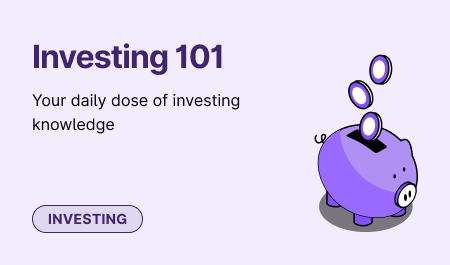Index funds are a type of mutual funds where assets are pooled together in a manner so that they mimic one of the benchmark indices. For example, an index fund replicating the Nifty50 will comprise of stocks from the Nifty50 index.
The assets from an index are imitated in hopes that the performance and returns of the fund will be in sync with the performance of the index. As these funds track and mimic the index, the fund manager doesn’t personally choose individual securities. The portfolio, too, doesn’t undergo much change just like the indices and is usually only updated in the event of a change in the benchmark index or the weightage of securities in it.
Index funds offer many benefits like low management costs, broad diversification, handsome returns, reduced human errors and predictability.
They provide a broader market exposure than investing in just one asset. They also offer long-term returns and are beneficial for the buy-and-hold type of investors. Hence, they are popular for retirement planning.
Let us now look at the different types of index funds.
Different types of index funds
- Market Cap
These types of funds look at the market capitalisation of companies before adding them to the basket. They come in three main varieties. Large cap, mid cap and small cap.
Index funds invest in large cap companies like TATA, Reliance, SBI etc. These are companies which rank in the first 100 on exchange based on their market capitalisations.
Index funds which invest in mid cap companies include companies ranking between 101 and 250 based on their market cap.
And Index funds which invest in small cap companies include companies ranking above 250 based on their market cap.
Nifty 50, Sensex, Nifty Next 50, Nifty 200, Nifty Small Cap 250, Nifty Mid Cap 150 are all indices based on the market capitalisation of companies. Index funds which mimic such indices are market cap index funds.
- Smart Beta
These days we have powerful computers and need not rely only on the market capitalisation of companies. Other factors such as P/E ratio, book value, cash flows, sales, RoE, Return on capital, debts and more can also be used.
Some indices now focus on such factors to decide the position of the company. These consist of companies which all fall into an order when the aforementioned factors are considered. When index funds follow such factors, they are called smart beta or factor based index funds.
The factors are divided on the basis of value, dividend yield, size, momentum, low volatility and quality.
- Broad Market
Some indices try to imitate the performance of the entire market by incorporating a huge number of companies like 500 or 750 you say it. When index funds track such indices, they are known as broad market index funds.
Such index funds allow investors to get a diverse range of companies under their portfolio with just one investment.
They comprise stocks across the whole spectrum of market cap from large cap to small cap. And it only makes sense that such funds are also made up of all types of securities inculcating all types of factors.
- International
When international brands are such an eye-catcher, why wouldn’t international stocks be. Some of them are big, growing further and seem to be taking over the world. Investors definitely want a piece of this pie.
With international index funds they get to become shareholders, not only for one international company but for many more and all together, in one tiny package.
These funds track indices which put together all the hot shots of the global market. While some involve US companies, others specifically cater to other markets. Different indices such as NYSE FANG+, S&P 500, NASDAQ100 and the Hang Seng indices are tracked by various mutual fund organisations in India.
- Custom index funds
Although not popular yet, custom index funds are slowly making their way into the picture. And you might be right to wonder, if they are custom, what’s the difference? Aren’t they just like actively managed mutual funds? But no. There is a major difference.
When it comes to actively managed mutual funds, the fund managers have complete control over what factors to consider and what stocks to pick. They can choose individual stocks which do not need to correlate and are in charge of the updates, removals and additions.
A custom index fund on the other hand, is still passively managed. A set of rules, strategies and measures are pre-decided. Stocks are picked on those basis and all fit in the same box. Changes too, follow the pattern.
- Equal Weight
Market Cap index funds are the popular choice. But it has some downfalls too.
What happens with market cap index funds, is that the weightage distribution copies the hierarchy from the indices. Which means that some stocks get a much higher weightage than others. This affects the portfolio by making it less evenly spread, less stable and more vulnerable.
However, problems like these are corrected by equal weight index funds. These funds also track similar indices to those tracked by the market cap index funds. But the difference here is that every stock in the fund is equally weighted. It makes room for diversification and strengthens the fund.
- Sector Based Funds
What if, one believes that one sector in the market is amped for growth. And what if they are only interested in investing in companies from that one sector? They can surely do so with the help of a sector based index fund.
In fact, they can go even further and invest in sub sectors under that sector. Many AMCs (Asset Management Companies) now offer such index funds.
These index funds pursue specific industry indices such as banking, healthcare, technology, automobiles, infrastructure etc. And under those categories, one can choose index funds for PSU bank index, pharmaceuticals and so on.
- Debt Funds
These index funds invest in fixed income securities like bonds and debt instruments. They are not very sought after as they happen to carry quite a lot of risk with them.
One is the interest rate risk wherein the prices of bonds keep changing as a result of changing interest rates.
The other is the credit risk which occurs when bonds default because the issuer couldn’t make the payments.
Not that it makes debt index funds a complete no go. If one chooses safely, like a target maturity index fund, the above mentioned risks can be mitigated. Target maturity index funds mitigate the risk by coming with a maturity date and are one of the safer options.
That’s it about index funds. If you are curious to know more about mutual funds, just browse through our blog or leave us a comment and let us know what you’d like to learn next.



